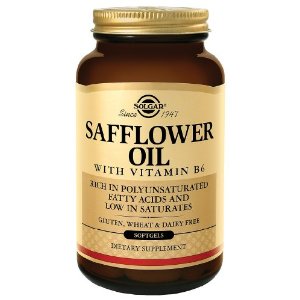Safflower Oil – Uses, Benefits & Weight Loss
Posted on 20. Apr, 2011 by admin in Blog
 What is Safflower?
What is Safflower?
According to the National Agricultural Research Institute, the safflower or carthamus tinctorius is a member of the Asteraceae and Compostiae family. It is a native plant that is said to be originated in North Africa, India, and Iran. The plant usually grows about 1 meter or 3 feet tall that is accompanied by globular capitula or flower head which is commonly seen as orange, red, and yellow flowers. The safflower also has well-built taproots which enable it to flourish even in dry climates.
Uses of Safflower
According to the Origin of Cultivated Plants, safflower is traditionally used for its seeds which are used for medicines, making dyes, and flavoring foods. Weiss (1971) has also noted that the safflower dye was also use to color silk and cotton. According to the Domestication of plants in the old world, safflower is occasionally used in cooking as an alternative for saffron.
The following are some other uses of safflower as noted in the Safflower book, written by Li Dajue:
- Treats menstrual problems
- Cardiovascular diseases
- Diminishes pain
- Reduces swelling
- Lowers high blood pressure
- Improves blood circulation
- Reduces total cholesterol and increases HDL cholesterol
- Decreases platelet aggregation
In addition, the book also discussed the possibility of safflower to be an effective treatment for the following medical conditions:
- Sterility
- Sciatica
- Rheumatism
- Respiratory disorders such as chronic bronchitis and whooping cough or pertussis.
- Spondylosis
- Osteomyelitis
- Costochronditis
- Concussion
- Vitiligo
- Acne
- Laryngitis
- Pharyngitis
- Myopia
- Leukemia
Furthermore, the plant has also been grown mainly for its oil which is extracted from the safflower seeds.
Safflower Oil
The Department of Agronomy in Plant Genetics and Entomology at University of Minnesota has noted that the safflower oil is colorless and flavorless oil that is derived from safflower seeds. The safflower oil is also stable which does not change even in a low temperature level.
The safflower oil has the highest level of polyunsaturated and saturated ratios in all types of oils that are available in the market today. It was also noted that safflower oil has a similar nutritional level with olive oil, but the latter is much more expensive. In addition, the safflower oil is also rich in oleic acid, omega 6 fatty acids, and vitamin E.
Furthermore, it was also noted that the safflower oil can be extracted from its seeds through mechanical and chemical process. In mechanical process, the safflower oil is extracted by a natural expeller. In this way, all the natural ingredients of the safflower oil are retained. On the other hand, the chemical process uses certain chemicals to extract safflower oil from its seeds. However, this process removes the essential nutrients that are found in the safflower oil. In addition, this type of safflower oil process can result to contamination due to chemicals that may result to negative effects on the person’s body. Because of this, the general public should be aware and check what method is used in preparing the safflower oil located at the nutritional label before buying the product.
Uses of Safflower Oil
Traditionally, safflower oil is useful for paints, coatings, alkyd resins, cooking and cosmetics. According to the encyclopedia of nutrition and good health, the safflower oil is non allergenic which makes it ideal for cosmetic use. Safflower oil is also rich in oleic acid that can lower the LDL cholesterol level. This idea was supported by International Plant Genetic Resources Institute. It was noted that the safflower oil is not only use for cooking and cosmetics, but it is also used for nutritional and medicinal supplements. In addition, safflower oil is also an efficient non allergenic dispersants that are useful for IV and injectable medications, infant liquid nutrition and food formulations.
Benefits of Safflower Oil
Safflower has many potential health benefits. In fact, according to University of California, safflower oil is a healthy choice for those people who have cardiovascular, diabetes, skin, hair, and weight problems. This was supported by Smith (1996), which has shown that the safflower oil has high unsaturated fats and low saturated fats that have shown potential to reduce the bad cholesterol level. In addition, many researches and studies have shown the positive effects of safflower oil as a fat eliminator. They have found out that the linoleic acid within the safflower oil is converted into gamma linoleic acid that activates the brown fat, thus losing weight.
Conclusion
These safflower’s researches and study findings add considerable evidence proving the benefits of the safflower in the area of disease prevention and health promotion. In fact, researchers from Department of Human Nutrition have noted that 1 and 2/3 tsp of safflower oil is recommended to help reduce the risk of cardiovascular diseases and other medical conditions.





Recent Comments